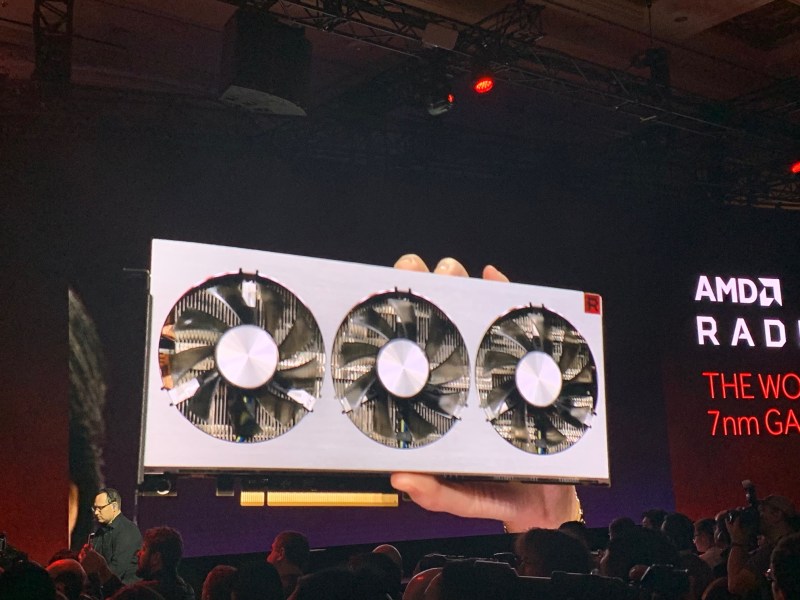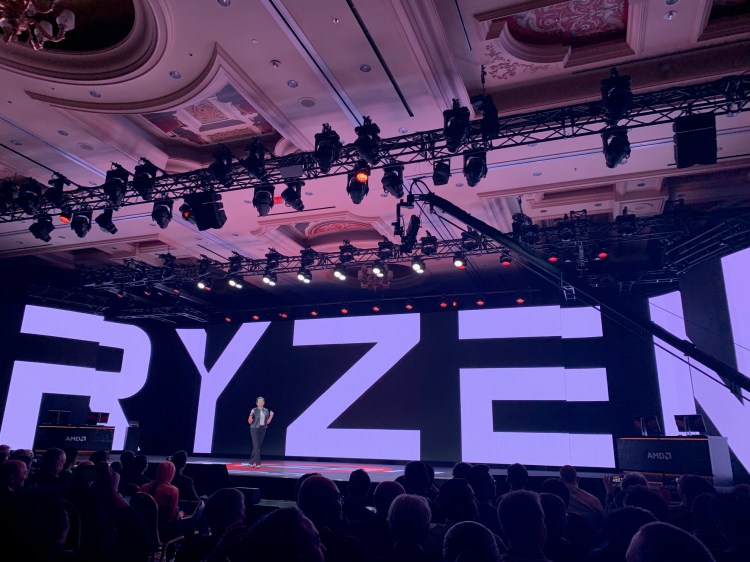Advanced Micro Devices met its reduced expectations for earnings and revenues in the fourth quarter, despite fears that it could be bad news.
The Santa Clara, California-based maker of PC processors and graphics chips said revenue was up 6 percent from a year ago to $1.42 billion, slightly off from expectations, while earnings per share were 8 cents, about flat compared to a year ago. In after-hours trading, AMD’s stock price was up 3.5 percent.
For the first quarter ending March 31, AMD expects revenue to be $1.25 billion and non-GAAP gross profit margin to be about 41 percent, or the same as in the fourth quarter. For the full year, AMD expects single-digit revenue growth for revenues, and that non-GAAP gross profit margin will be more than 41 percent. AMD said that it expects “continued softness” in the graphics channel and seasonality across businesses in the first quarter.
After AMD missed earnings in the previous quarter ended September 30, analysts adjusted their expectations downward. For the fourth quarter, AMD was expected to hit the revised targets of 8 cents non-GAAP earnings per share on revenues of $1.45 billion.
June 5th: The AI Audit in NYC
Join us next week in NYC to engage with top executive leaders, delving into strategies for auditing AI models to ensure fairness, optimal performance, and ethical compliance across diverse organizations. Secure your attendance for this exclusive invite-only event.
“In 2018, we delivered our second straight year of significant revenue growth, market share gains, expanded gross margin and improved profitability based on our high-performance products,” said Lisa Su, CEO of AMD, in a statement. ” Importantly, we more than doubled our Epyc [server] processor shipments sequentially and delivered record GPU data center revenue in the quarter. Despite near-term graphics headwinds, 2019 is shaping up to be another exciting year driven by the launch of our broadest and most competitive product portfolio ever with our next-generation 7-nanometer Ryzen, Radeon, and Epyc products.”
For 2018, AMD reported revenue of $6.48 billion, up 23 percent from a year earlier. Net income was $337 million, or 32 cents a share, compared with a loss of $33 million, or 3 cents a share a year earlier.

Above: The AMD Radeon VII.
Things have been looking up for AMD, as Su said in AMD’s first-ever keynote speech at the recent CES 2019 tech trade show in Las Vegas. The company launched its Zen-based Ryzen processors in the spring of 2017, getting a jump on Intel for once with processors that could handle 52 percent more instructions per clock cycle than the previous generation.
It took about five years to design AMD’s Zen core, which can generate 52 percent better performance per clock cycle than its predecessor. And AMD has introduced 10 different families of chips based on the Zen architecture since 2017. Those PCs can do things like wake up with voice commands, last 12 hours doing productivity work, and enable gaming on laptops.
AMD’s rival Intel reported weaker-than-expected quarters for the end of the year. Intel hit its Q4 profit targets, but revenue was lower than predicted, due in part to PC chip shortages and lower data center demand.
Nvidia formally announced earnings on February 14, but it preannounced weak results on Monday. Nvidia was hampered by the cryptocurrency bust, which has decreased demand for GPUs for crypto mining, as well as weaker-than-expected demand for gaming GPUs such as its new RTX cards. Data center demand was also weak.
Back in October, AMD said it had lower-than-expected GPU sales as the cryptocurrency boom came to an end. Nvidia subsequently blamed its earnings slip on AMD flooding the market with mid-range graphics chips as well as the crypto bust. It’s hard to see how much harm the crypto bust has done since the crypto bubble began deflating a year ago and it was supposedly never more than 10 percent of GPU sales.
But Nvidia said this week that revenue was weak in part because of concerns around the economy, particularly due to trade worries with China in the midst of a tariff war with the U.S. Gaming revenue was also weaker due to slow adoption of Nvidia’s new RTX cards, which are very different in that they support real-time ray tracing. AMD’s new GPUs coming February — the Radeon VII — do not support real-time ray tracing. Nvidia hopes that real-time ray tracing will take off as more games utilize it.
The 7-nanometer Radeon VII chips offer a 27 percent to 62 percent boost in graphics performance versus the previous generation, and they go on sale on February 7 at $700, or below the price Nvidia is charging for its high-end GPUs.
For the coming quarter, AMD said that semi-custom revenue (mostly chips for game consoles) will be down in the full year, while Ryzen, Epyc, and data center GPUs will be up. AMD now has $1.16 billion in cash.


